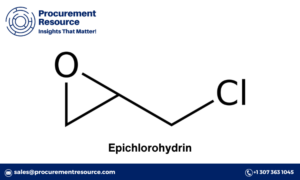
I. Introduction
A. Importance of Food Safety
Food safety is paramount in the food industry, directly impacting public health and consumer confidence. Contaminated food can lead to serious health issues and damage a company’s reputation, making prioritizing safety crucial. Implementing robust food safety measures not only ensures regulatory compliance but also fosters trust among consumers, enhancing brand reputation and long-term sustainability.
B. Overview of HACCP Certification
HACCP (Hazard Analysis and Critical Control Points) certification is a globally recognized system ensuring food safety. It involves seven core principles, guiding the development of a proactive food safety management system. Through systematic hazard analysis and control measures at critical points, HACCP certification helps businesses prevent foodborne illnesses, comply with regulations, and maintain consumer trust in their products.
II. Understanding HACCP Principles
A. What is HACCP?
HACCP, which stands for Hazard Analysis and Critical Control Points, is a systematic approach to food safety management. It aims to identify, evaluate, and control hazards throughout the food production process. Unlike traditional inspection-based methods, HACCP focuses on prevention rather than detection, making it a proactive system for ensuring food safety. By analyzing potential hazards and implementing control measures at critical points in the production process, HACCP helps prevent foodborne illnesses and ensures the production of safe and high-quality food products.
B. History and Evolution of HACCP
The history of HACCP dates back to the 1960s when it was developed by Pillsbury, the US Army, and NASA to ensure the safety of food for space missions. Over the years, HACCP gained recognition and was adopted by food regulatory agencies worldwide. Its evolution led to the establishment of seven core principles that form the foundation of modern HACCP systems. Today, HACCP certification is widely recognized as a global standard for food safety.
C. Core Principles of HACCP Implementation
- Conducting hazard analysis: Identifying potential hazards associated with the production process.
- Identifying critical control points (CCPs): Determining the points in the process where control measures are essential to prevent, eliminate, or reduce identified hazards.
- Establishing critical limits: Setting criteria to ensure CCPs are under control, such as temperature, time, pH levels, or microbial counts.
- Implementing monitoring procedures: Developing procedures to monitor CCPs regularly and accurately to ensure they remain within critical limits.
III. Benefits of HACCP Certification
A. Ensuring Food Safety and Quality
HACCP certification plays a vital role in ensuring food safety and quality. By identifying potential hazards in the production process and implementing control measures at critical points, HACCP helps prevent contamination and reduce the risk of foodborne illnesses. This proactive approach to food safety not only protects consumers but also ensures the production of safe and high-quality food products that meet regulatory standards and customer expectations.
B. Compliance with Regulatory Standards
Compliance with regulatory standards is a key benefit of HACCP certification. By implementing HACCP principles and obtaining certification, food businesses demonstrate their commitment to meeting regulatory requirements and adhering to industry standards. This helps businesses avoid legal issues, fines, and penalties associated with non-compliance, ensuring continued operation and success in the marketplace.
C. Enhancing Credibility and Marketability
HACCP certification enhances the credibility and marketability of food products and businesses. Consumers today are more informed and concerned about food safety than ever before, and they actively seek out products from companies that prioritize safety and quality. By obtaining HACCP certification, businesses signal to consumers that their products have been produced using stringent safety measures and adhere to the highest standards of quality. This builds trust and confidence in the brand, leading to increased customer loyalty and market share.
D. Minimizing Risks and Liabilities
Another significant benefit of HACCP certification is the minimization of risks and liabilities for food businesses. By implementing proactive measures to identify and control hazards in the production process, HACCP helps reduce the risk of food safety incidents and product recalls. This not only protects consumers from harm but also safeguards the reputation and financial stability of the business. In the event of a food safety issue, having HACCP certification in place demonstrates due diligence and can mitigate legal liabilities and financial losses associated with recalls, lawsuits, and damage to brand reputation.

IV. HACCP Certification Process
A. Step-by-Step Guide to Obtaining HACCP Certification
- Conducting Hazard Analysis: The first step in the HACCP certification process is to conduct a thorough hazard analysis. This involves identifying and evaluating potential hazards associated with each step of the food production process.
- Identifying Critical Control Points (CCPs): Once hazards are identified, the next step is to determine critical control points (CCPs). These are the points in the production process where control measures can be applied to prevent, eliminate, or reduce hazards to acceptable levels.
- Establishing Critical Limits: Critical limits are the criteria used to determine whether a CCP is under control. These limits are based on factors such as temperature, time, pH levels, or microbial counts and are established to ensure hazards are effectively controlled.
- Implementing Monitoring Procedures: Monitoring procedures are put in place to ensure that CCPs are consistently controlled within critical limits. Regular monitoring allows businesses to detect deviations from critical limits and take corrective actions before unsafe products are produced.
- Verification and Documentation: Verification involves confirming that the HACCP system is working effectively through activities such as internal audits, product testing, and review of records. Documentation is essential throughout the HACCP process to provide evidence of compliance and facilitate traceability.
B. Tips for a Successful HACCP Certification Process
- Form a Cross-Functional HACCP Team: Involve representatives from different departments in the organization to contribute their expertise and perspectives to the HACCP plan. This interdisciplinary approach ensures comprehensive hazard analysis and effective control measures.
- Provide Training and Education: Train employees on HACCP principles, procedures, and their roles and responsibilities within the HACCP system. Continuous training ensures that staff understand the importance of food safety and how to implement HACCP effectively.
- Regular Reviews and Updates: Conduct regular reviews of the HACCP plan to ensure its effectiveness and relevance. Update the plan as needed based on changes in processes, products, regulations, or best practices to ensure ongoing compliance and effectiveness.
- Foster a Culture of Continuous Improvement: Encourage employees to identify opportunities for improvement and actively participate in ongoing efforts to enhance food safety practices and procedures. A culture of continuous improvement ensures that the HACCP system evolves to meet changing needs and challenges.
V. Maintaining HACCP Certification
A. Ongoing Compliance and Monitoring
Maintaining HACCP certification requires continuous compliance and monitoring. Regular checks on critical control points ensure effective hazard control. Documented records provide evidence of compliance and aid traceability during audits.
B. Continual Improvement and Updates
Continual improvement is vital for adapting to changes in processes and regulations. Periodic reviews identify areas for enhancement in the HACCP plan. Collaboration fosters a culture of continuous improvement among employees.
C. Dealing with Non-Conformities
Prompt identification of non-conformities is crucial for corrective action. Investigating root causes and verifying corrective measures prevent recurrence. Preparation for audits ensures up-to-date documentation and consistent procedures.
VI. Conclusion
A. Recap of Key Points Discussed
In conclusion, HACCP certification is a crucial aspect of ensuring food safety in the food industry. We explored the importance of HACCP certification, its principles, benefits, certification process, and the significance of maintaining certification through ongoing compliance and monitoring.
B. Encouragement for Businesses to Pursue HACCP Certification
For businesses in the food industry, pursuing HACCP certification is not just a regulatory requirement but a commitment to producing safe and high-quality food products. Obtaining HACCP certification demonstrates dedication to food safety, compliance with regulatory standards, and a commitment to consumer trust.
C. Final Thoughts and Resources for Further Reading
In conclusion, while obtaining HACCP certification may require initial investments of time and resources, the long-term benefits far outweigh the costs. By implementing HACCP principles, businesses can mitigate risks, enhance credibility, and ensure the safety and quality of their food products. For further reading, resources such as industry publications, training courses, and regulatory guidelines can provide valuable insights into HACCP implementation and food safety management.



























